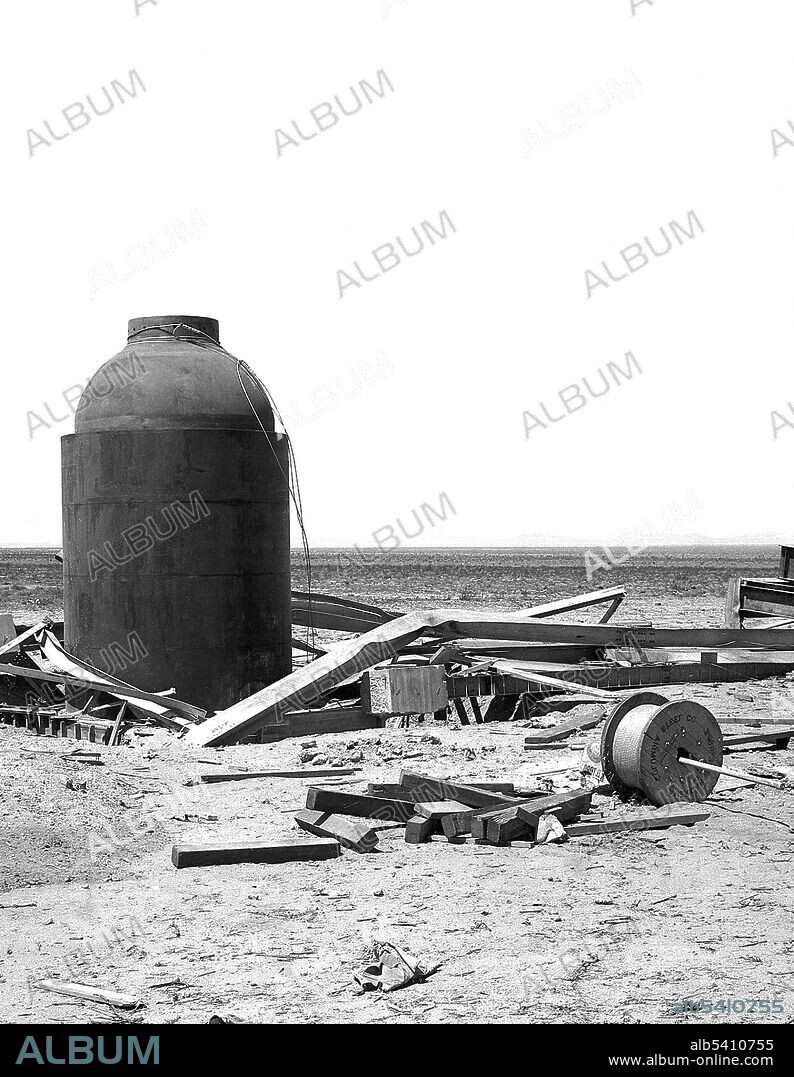alb5410755
Trinity Test Site, Manhattan Project, Jumbo,1945

|
Add to another lightbox |
|
Add to another lightbox |



Title:
Trinity Test Site, Manhattan Project, Jumbo,1945
Caption:
The Gadget device detonated at the Trinity site involved two explosions: first a conventional TNT explosion and then a nuclear explosion, if the chain reaction started by the first explosion was maintained. The Jumbo device was designed by the X2-A section to act as a failsafe device for the Trinity test explosion. The bomb would be placed into the heart of Jumbo, and if the bomb's detonation was unsuccessful, the outer walls of Jumbo would not be breached, making it possible to recover the bomb's plutonium. Jumbo was a steel cylinder 10 feet in diameter and 25 feet long with walls 14 inches thick, and weighed 214 short tons. By the time of the actual Trinity test, Manhattan Project officials were confident enough in the plutonium bomb and secure enough in the stream of plutonium coming from Hanford and the use of Jumbo would interfere with the gathering of data on the explosion, the primary objective of the test. Jumbo was deemed unnecessary. Instead, it was hoisted up a steel tower 800 yards from the explosion, where it could be used for a subsequent test. In the end, Jumbo survived the explosion, although its tower did not.
Credit:
Album / Science Source
Releases:
Model: No - Property: No
Rights questions?
Rights questions?
Image size:
3256 x 4200 px | 39.1 MB
Print size:
27.6 x 35.6 cm | 10.9 x 14.0 in (300 dpi)
Keywords:
1940S • 1945 • 20 XX TWENTIETH CENTURY • 20TH CENTURY • ALAMOGORDO ARMY AIRFIELD • ALAMOGORDO • AMERICA • ATOM BOMB • ATOMIC AGE • ATOMIC RESEARCH • BW • CELEBRITY • CODE NAME • DESERT • FAILSAFE DEVICE • FAMOUS • GADGET DEVICE • GADGET • HISTORY OF SCIENCE • HISTORY • JUMBO DEVICE • JUMBO • MANHATTAN PROJECT • MILITARY • NUCLEAR BOMB • NUCLEAR RESEARCH • NUCLEAR WEAPONS • PROTECTIVE CASING • REMOTE • RESEARCH & DEVELOPMENT • RESEARCH AND DEVELOPMENT • SCIENCE HISTORY • SIEGE • SITE • STEEL CYLINDER • TOP SECRET • TRINITY TEST SITE • TRINITY • TWENTIETH CENTURY • USA • WEAPON RESEARCH • WORLD WAR II
 Pinterest
Pinterest Twitter
Twitter Facebook
Facebook Copy link
Copy link Email
Email

